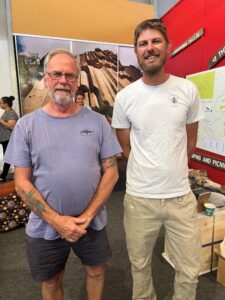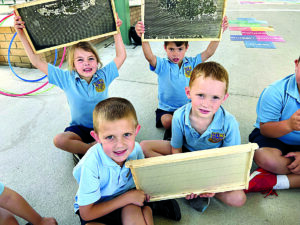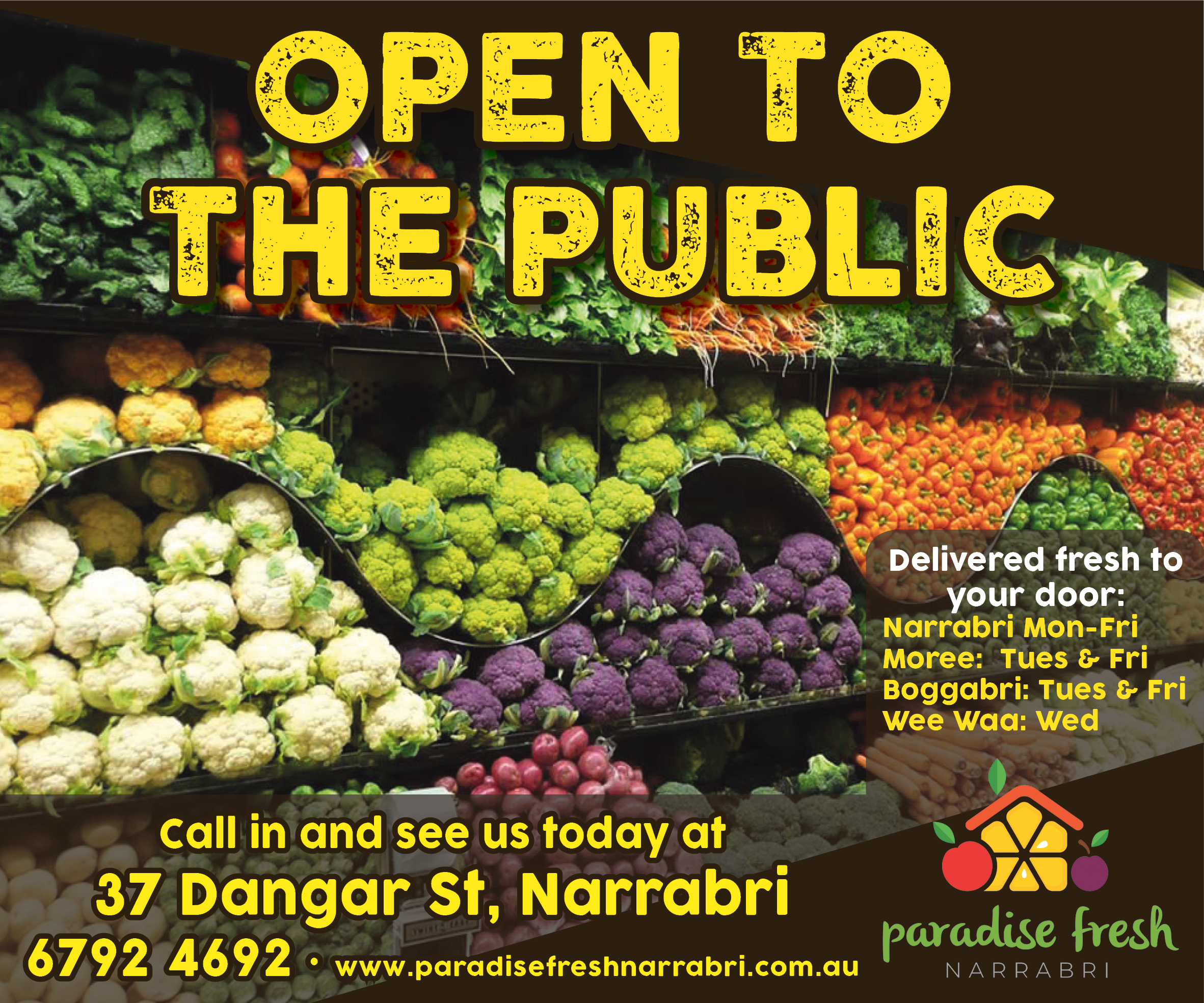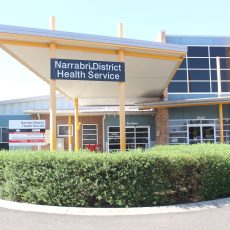Where would we be without the bees, the butterflies and all the other pollinators?
Paying $20 for an apple, according to Dan Mapstone, our resident apiarist.
“If we didn’t have bees, someone would have to physically go around and pollinate all the apples, it all takes time,” said Mr Mapstone.
All generations of Narrabri residents were buzzing at the opportunity to learn how we can support these hardworking insects in their vital job of pollinating our flowers and food during the dedicated week of November 11-19.
To celebrate and raise awareness, the Narrabri Shire Council Visitor Information Centre hosted Mr Mapstone for the first time on Wednesday, November 14, where he was joined by budding bee enthusiasts and gardeners for a chat over morning tea.
Mr Mapstone came fully prepared with his beekeeper suit, beehive frames, and beekeeping equipment, ready to discuss all things beekeeping, and the hot topic of honey.
Where does the interest in bees spark?
“I don’t know, I think it’s the fascination,” said Mr Mapstone.

Peter and Dan Mapstone.
“Most enthusiasts are gardeners and already know how important bees are, so they naturally start thinking ‘maybe we can do it’ and start getting into bees, and it just grows from there.”
At the Visitor Information Centre, hot topics included the difference between commercial and raw honey, all the buzz about queen bees, and an update on the deadly Varroa Mite – don’t worry, it’s not here yet.
Of the 1400 crop plants grown around the world that produce all our food and plant-based industrial products, almost 80 per cent require pollination by animals.
Bees, including the 2000 native Australian species, are the best pollinators of the lot, as they rely on pollen to feed their young in their nests.
They will do this by visiting hundreds of flowers a day flying up to five kilometres away, and each time, leaving specks of pollen on the female part of the flower, which pollinates the flower.
Now the plant can produce seeds and make fruit, and we can get delicious apples, pears, peaches, melons, not to mention cotton and most importantly for adults – coffee.
Without pollination, most wildflowers would not be able to produce new seedlings and gradually these flowers would also disappear from our bushland.
Mr Mapstone’s own journey into apiculture started six years ago, when, as a gardener, he was going through a particularly tough time with his veggie patch.
After starting with four beehives to help with his pollination issues, Mr Mapstone’s interest soon turned to bees.
“I love gardening, but I don’t garden much these days because I’m so busy with bees,” said Mr Mapstone.
Now 60 hives strong, he’s even managed to convert his brother in Hervey Bay.

Visitor information centre coordinator Rindy Maladeni, Visitor information Centre concierge Jo Hannaford, Dan Mapstone and Narrabri Shire open space coordinator Aaron Bean.
“It’s very addictive once you get into it, there’s just something about it that when you start, you just want to keep getting back into it,” said Mr Mapstone.
Australian Pollinator Week was founded by Dr Megan Halcraft in 2015, following on from a community project called “Bee Aware of Your Native Bees”, which was funded by the Western Sydney University and the Environmental Trust.
The special week in November raises awareness of our important and unique insect pollinators during our southern spring, something that Mr Mapstone is keen to play his part in.
“I think people need to be aware, just things like leaving a tap on softly for the day so our bees can have a drink in the heat,” said Mr Mapstone.
“Or planting more flowers and vegetables, it’s just getting back to basics really, isn’t it?
“Like having a little vegetable patch in your backyard.”
After his presentation at the Information Centre, Dan and his busy bees hit the road on Friday to pay a visit to the absolutely delighted students at Narrabri Public School.
“I’ve got this clear box and I put three frames of bees in it and the kids can actually see them working – it’s pretty cool, they love it, it gets them hooked,” said Mr Mapstone.
“Whenever I bring the bees in, the kids get so excited, they are completely fascinated.”
“It makes you wonder, where does all this curiosity go when we get older.”
Joined by dad and fellow apiarist Brian Mapstone, he fielded as many brilliant questions as possible, but some really made us pause, like “why is honey sweet?”
Surely because of the nectar, right?
“Yes, it’s definitely the nectar,” said Mr Mapstone.
When Mr Mapstone asked Year 2 if anyone had ever had a bee sting, he was impressed to see all hands fly up – this wasn’t their first rodeo.
Collaborative events and activities such as these, held by local council and schools are exactly how Australian Pollinator Week aims to inspire community engagement and raise awareness for our bees.
And how are our local bees doing?
“The bees are good, there’s is no Varroa here now, and until that hits us, we’ll be fine, then it’s going to hurt.
“But right now, they are working hard, and very happy,” said Mr Mapstone.

Back, Aaliyah Simpson, Wyatt Bonney, front, Blake Baker and Jeb Walker.










